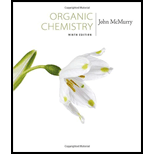
Interpretation:
Thermal electrocyclic ring closure of (2Z, 4Z, 6Z)-2,4,6-octatriene yielding products via conrotatory and disrotatory cyclizations.
Concept introduction:
Conrotatory and disrotatory is based on the rotation at each end of the molecule. In conrotatory mode, both atomic orbitals of the end groups turn in the same direction ,such as both atomic orbitals rotating clockwise or counter-clockwise. In disrotatory mode, the atomic orbitals of the end groups turn in opposite directions ,one atomic orbital turns clockwise and the other counter-clockwise. The cis/trans geometry of the final product is directly decided by the difference between conrotation and disrotation.
Whether a particular reaction is conrotatory or disrotatory can be accomplished by examining the molecular orbitals of each molecule and through a set of rules. Only two pieces of information are required to determine conrotation or disrotation using the set of rules: how many electrons are in the pi-system and whether the reaction is induced by heat or by light. This set of rules can also be derived from an analysis of the molecular orbitals for predicting the stereochemistry of electrocyclic reactions.
Trending nowThis is a popular solution!

Chapter 30 Solutions
Study Guide with Student Solutions Manual for McMurry's Organic Chemistry, 9th
- Provide the drawing of the unknown structure that corresponds with this data.arrow_forward20.44 The Diels-Alder reaction is not limited to making six-membered rings with only car- bon atoms. Predict the products of the following reactions that produce rings with atoms other than carbon in them. OCCH OCCH H (b) CH C(CH₂)s COOCH མ་ནས་བ (c) N=C H -0.X- (e) H C=N COOCHS + CH2=CHCH₂ →→arrow_forwardGiven the attached data, provide the drawing for the corresponding structure.arrow_forward

 Organic ChemistryChemistryISBN:9781305580350Author:William H. Brown, Brent L. Iverson, Eric Anslyn, Christopher S. FootePublisher:Cengage Learning
Organic ChemistryChemistryISBN:9781305580350Author:William H. Brown, Brent L. Iverson, Eric Anslyn, Christopher S. FootePublisher:Cengage Learning

